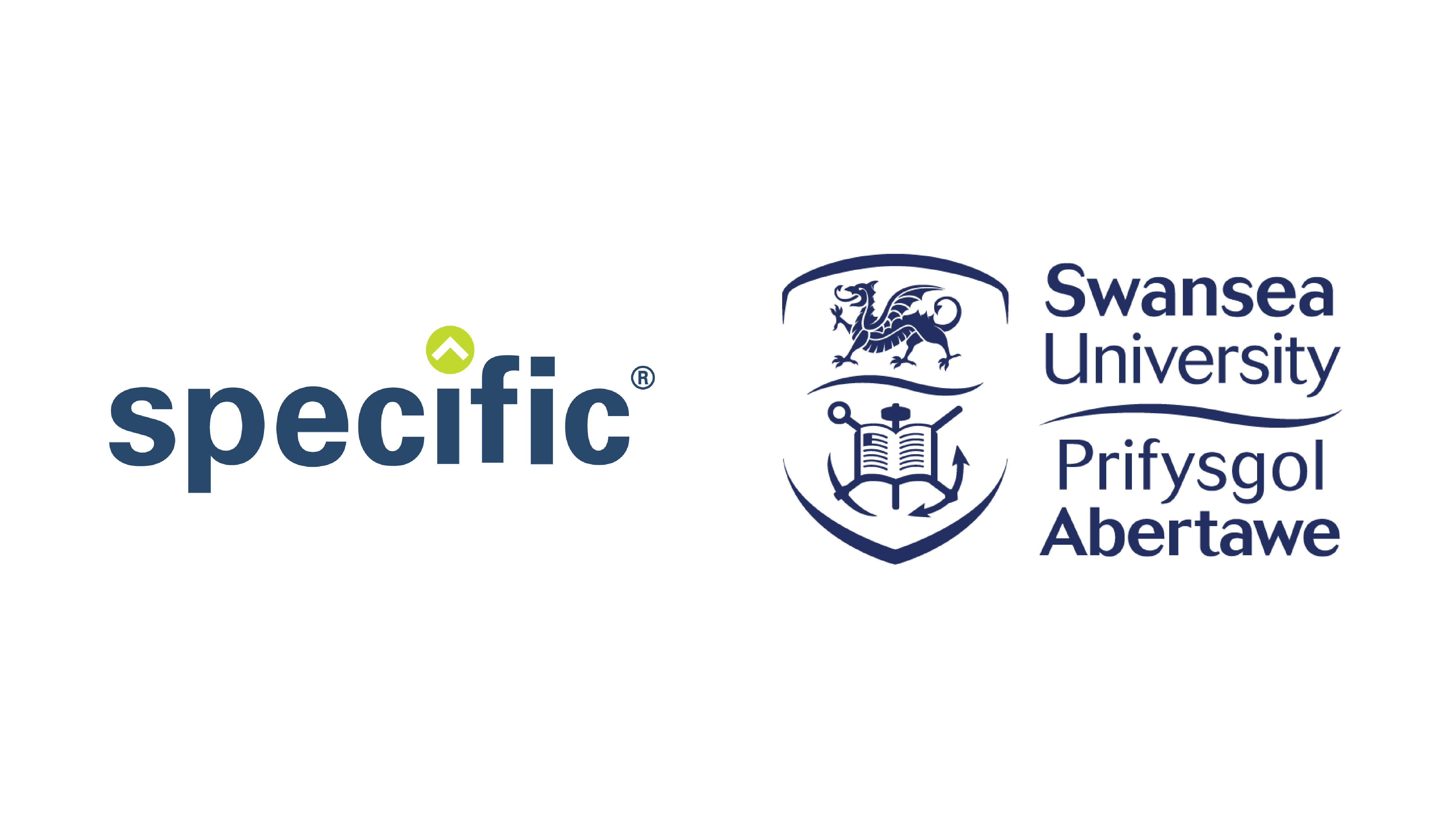Improving our technology through independent testing

We chatted with Hasan Hayat (Technical Business Development Executive) and Rich Lewis (Senior Technology Transfer Fellow) from SPECIFIC, to find out how their team validated and supported the development of our system.
Introducing SPECIFIC
Hasan: We’re a UK Innovation and Knowledge Centre based at Swansea University, dedicated to the decarbonisation of heat and power in buildings. We support the development of affordable energy technologies and systems that can be manufactured at scale and reused or recycled at the end of their life.
Rich: Part of this is helping early-stage businesses to progress and validate their technologies, independently piloting them in our demonstrator buildings, including our energy-positive Active Classroom and Active Office.

Discovering measurable.energy
Hasan: A big part of our work looks at IoT and small power, and we’re always on the lookout for new solutions that can inform businesses about their energy use and support them to reduce their carbon emissions.
Rich: We stumbled across measurable.energy by pure coincidence. Our Technology Director and Business Development Manager met the team at a conference in Birmingham, and saw great potential in the innovative concept, so were very keen to see what the system could do.
Hasan: With it being such an early stage in development, the physical socket wasn’t available yet, so we eagerly waited until there was a prototype ready to test, and boy, was it worth the wait!
Testing out the system
Hasan: Once the sockets were installed, we started plugging in a range of commonly used devices, including laptops, desktop PCs, monitors, printers, Wi-Fi routers, desk lamps, fans, coffee machines, heaters and kettles. Over a period of three months, we logged and monitored various essential data parameters, including current, voltage, power and energy use.
Rich: In addition, our electrical engineers completed a series of lab tests to independently acquire data, monitor and validate the system’s performance. And it lived up to expectations! We were really blown away by the system’s ability to help businesses understand their energy use.
Making improvements
Creating enterprise Wi-Fi connectivity
Rich: Like most universities, we use the enterprise Wi-Fi network, eduroam. Unfortunately, this wasn’t supported on the first prototype. Working closely with the team, this functionality was soon added to the sockets, allowing them to connect seamlessly – making onboarding much easier.
Promoting behavioural change
Hasan: We spent a lot of time observing the LED lights on the sockets and their impact. We loved how different they looked compared to traditional sockets, and found they worked well at capturing our attention, making us consider the impact of our carbon emissions more.
During our testing, we discovered that these:
- Stayed green on several occasions when energy demand increased in bad weather.
- Showed red when we were using off grid energy.
- Weren’t always easy to see.
Rich: After sharing our findings with the team, several changes were implemented to improve the potential for behavioural change, including:
- The use of regional National Grid data to account for localised differences in energy demand.
- The inclusion of off grid energy sources.
- A complete redesign of the socket fascia to make the LED light even more prominent.
Speeding up the dashboard
Hasan: Running reports on the hub took us longer than expected, so we identified ways to improve the load speed, that measurable.energy later implemented. The dashboard is now faster, making it easier to access savings and carbon emissions data – a powerful tool for education and behavioural change.

“We introduced the team to Kier and the sockets were later installed in their portable cabins and got featured on the BBC.”
Forging partnerships
Hasan: At the time of the pilot, we were working closely with the Kier Group and the Wernick Group on construction projects at Swansea University’s Bay Campus. Through these, we introduced both companies to measurable.energy and as they say, the rest is history! Now, the technology is installed in Kier’s portable cabins and at Wernick’s head office.
Rich: After seeing the impressive results first-hand, we’re keen to implement the system across our campuses, targeting areas where we know we can make the biggest reductions in carbon emissions.
Our advice to businesses
Rich: Turn things off - you’ll be surprised at how much equipment is left on! An organisation our size consumes a lot of energy, so making small changes can have a huge impact. We’ve saved 10-15% on our electricity bills by simply switching off small power devices when staff aren’t in over the weekend.
Hasan: Also, consider how frequently your rooms are being used and what needs to be powered. We have two main campuses and satellite sites and it’s not uncommon for rooms to be used infrequently, meaning projectors, screens and other equipment is left on for months at a time.
Rich: Most importantly, do a thorough cost-benefit analysis. Consider your budget and think about where you can make your biggest savings.
